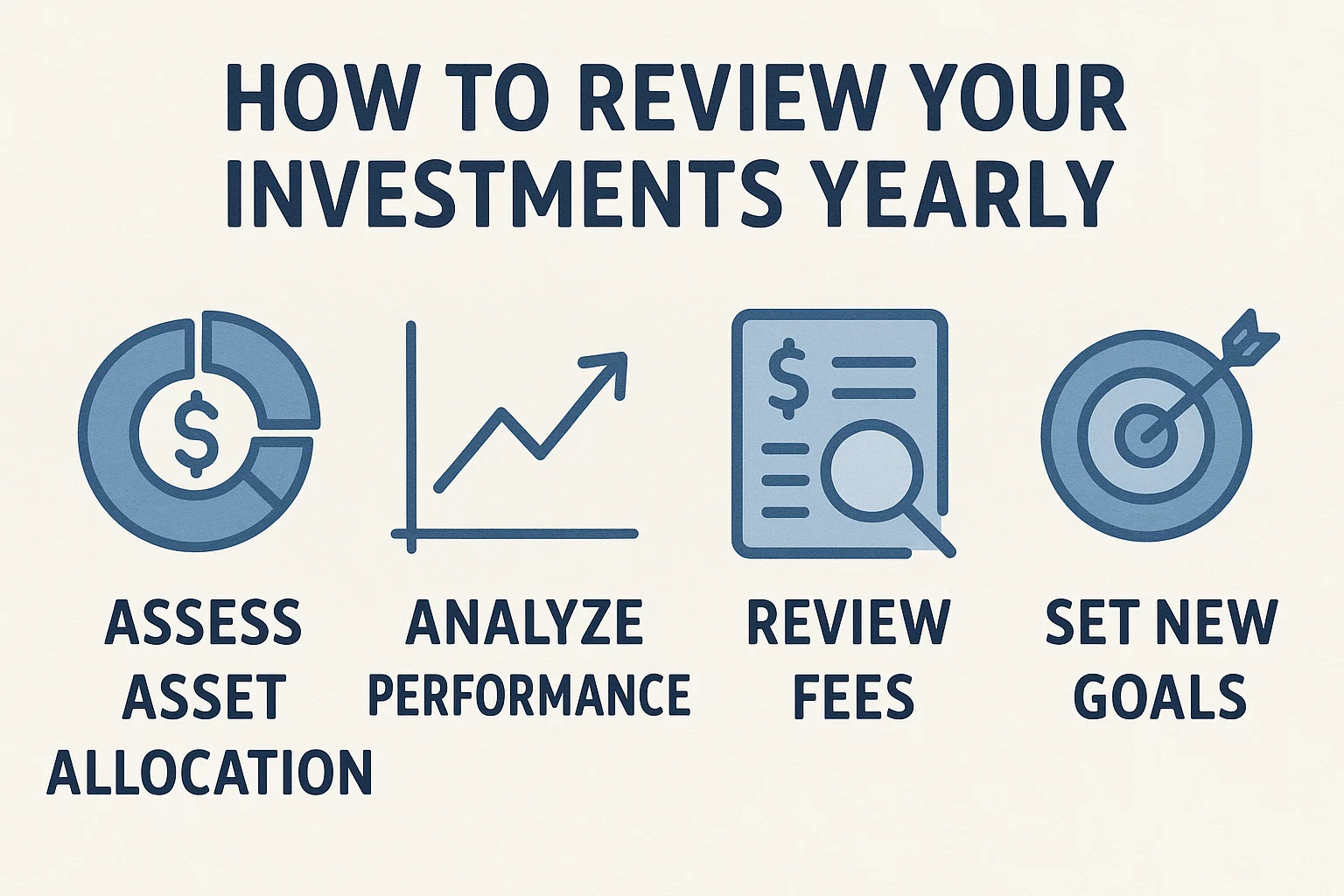Breaking News
Popular News




Enter your email address below and subscribe to our newsletter

The financial world changes fast. What worked last year may not serve your goals today. That’s why learning how to review your investments yearly is a critical habit for building long-term wealth.
Whether you’re a beginner or seasoned investor, this 7-step annual investment review guide will help you align your assets with your financial goals in 2025 and beyond.
Start with your “why.”
Are you saving for retirement, a house, or your child’s education?
Have any life events changed your priorities?
Update your short-term and long-term goals before reviewing your portfolio.
Your investment mix across:
🏦 Equity
💸 Debt
🪙 Gold/Crypto
🏠 Real estate
…should reflect your age, risk tolerance, and goals.
👉 Too much equity may be risky in volatile markets; too much debt may slow growth.
Ask:
Did this mutual fund or stock beat its benchmark?
Is your crypto portfolio outperforming inflation?
Is your FD rate lower than market alternatives?
Remove or replace consistent underperformers.
After one year, your portfolio may drift.
For example, equity might have grown from 60% to 75%. That’s higher risk.
Rebalancing brings your asset allocation back to target by:
Selling overweight assets
Adding to underweight ones
Mutual funds with high expense ratios eat into returns.
Switch to low-cost index funds or ETFs if possible.
Compare:
Fund management fee
Exit load
Tax efficiency
Don’t wait until March.
Harvest losses for capital gains setoff
Hold for long-term capital gains benefit
Maximize ELSS/SIP tax-saving options
Optimize your tax strategy alongside your investment plan.
Make a fresh roadmap:
Continue SIPs or increase them
Add new goals
Invest in trending sectors like AI, green energy, or blockchain
Set calendar reminders for mid-year and quarterly checks.
Ideally between January and March, or around your financial year-end. Pick a consistent month every year.
Assess the reason. If the underperformance is consistent and fundamental, consider replacing it.
Not always. You can use apps, tools, and articles on bit2050.com for guidance. But advisors help with complex planning.
Yes, capital gains may apply when selling assets to rebalance. Consider tax-loss harvesting to reduce the burden.
Reviewing your investments yearly is not just about maximizing returns — it’s about making sure your money still works for your goals. These 7 smart steps ensure you stay aligned, stay protected, and stay growing.
👉 Ready to optimize your 2025 portfolio? Explore more on bit2050.com